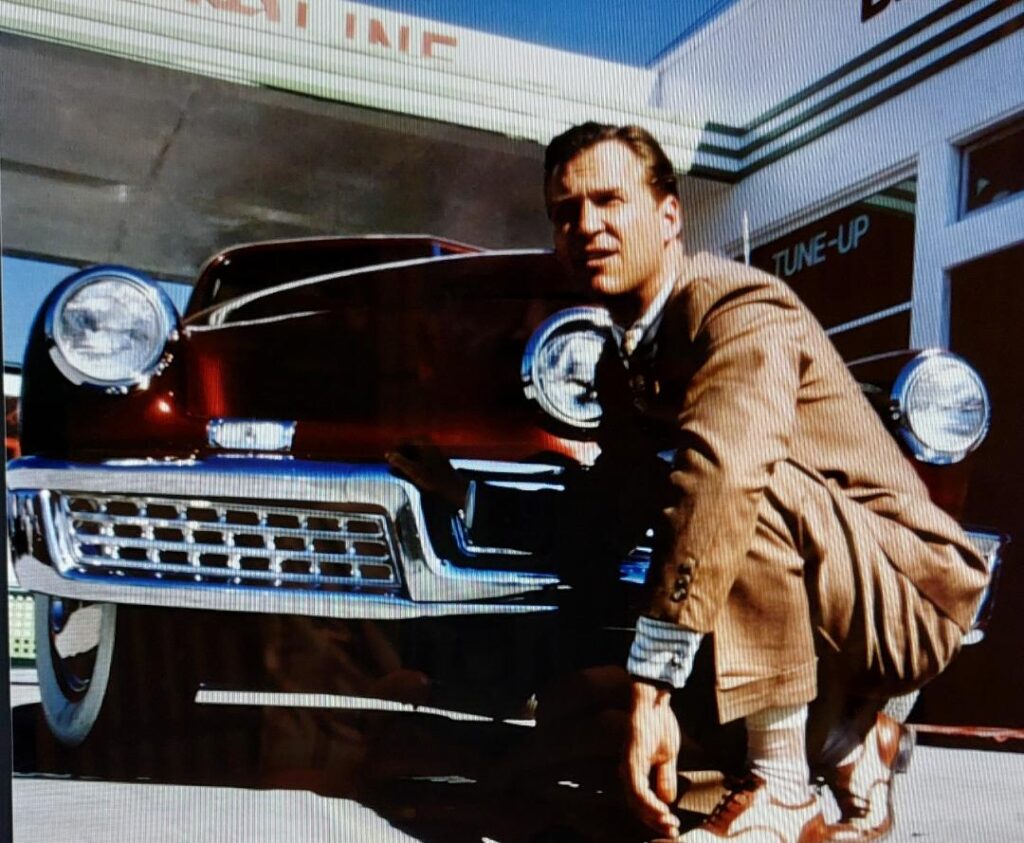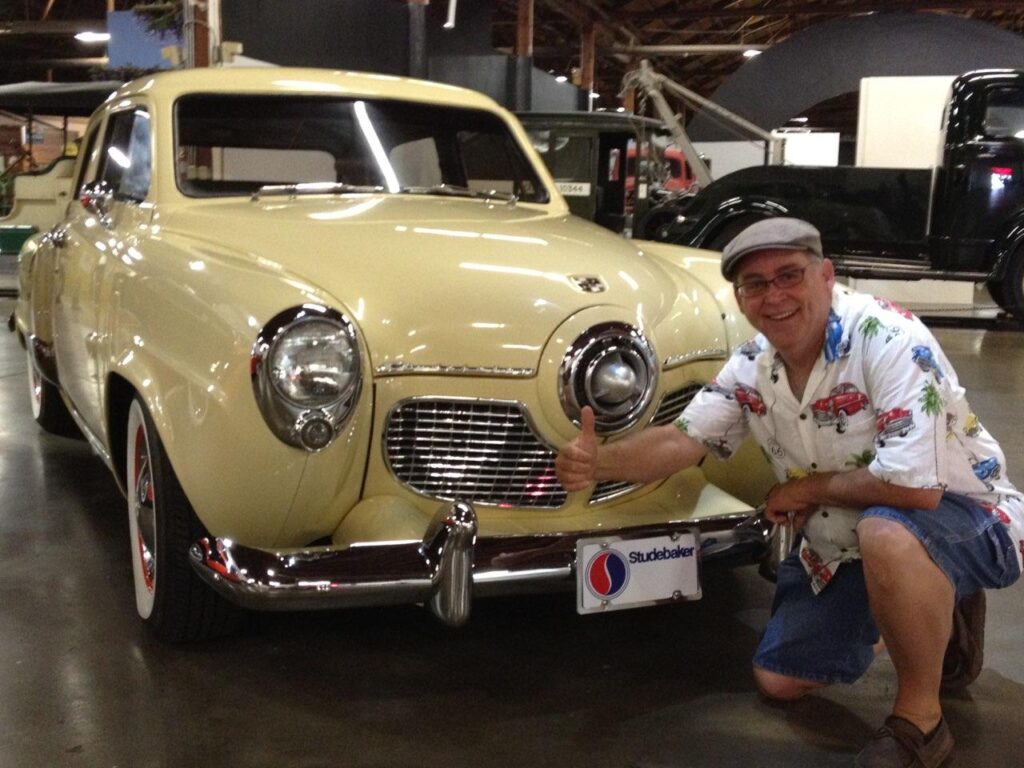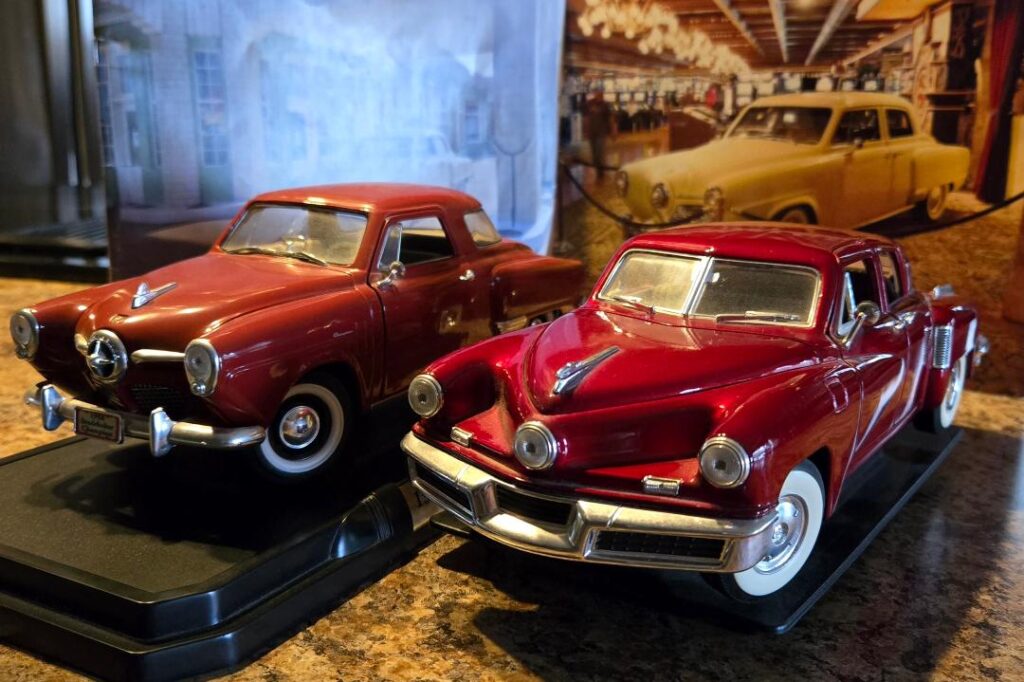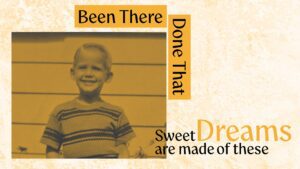Story by Jon Stalnaker AKA The Studebaker Dude
I wanted to follow up on the subject of the similarities in the designs of the 1948 Tucker and the 1950/51 Studebaker Bullet Nose automobiles. The two cars might seem similar to people who only see them occasionally, but to those of us who own a Bullet Nose Studebaker or a Tucker, they really don’t look that much alike. I have included pictures of two scale model replicas of a red 1950 Studebaker and a red 1948 Tucker side-by-side. Since the Studebaker is a 2-door model, I included a picture of my Studebaker in the background so you can also see the differences there. My car is a 4-door sedan with suicide doors in the back, very similar to the Tucker. That’s about where the similarities end.



The fender bulges on the sides are completely different and Tucker has a much more elaborate taillight setup. There is a vent in the sides of the rear fenders because the motor is in the back of the Tucker while the Studebaker has a much more common front engine design. The front also looks completely different from the Tucker below the headlights. What people focus on is the third headlight on the Tucker and the bullet grill on the Studebaker. I have seen Studebakers modified by replacing the bullet with a third headlight but that still doesn’t make a Stude look like a Tucker. I’ve seen pictures of Bullet Nose Studebakers with red lights installed in the middle for police patrol use. And I’ve seen them installed on custom versions. The back of the Tucker is a fastback while the Studebaker is not, they look nothing alike.
Both of these cars were designed after World War II, a period when the automotive industry was desperately rushing to put out new designs for cars. The auto industry in America completely shut down during the war and they concentrated on military aircraft, tanks, jeeps and anything else needed to stop Hitler and Japan’s aggressions. Those were the only new vehicles coming out of the USA. Studebaker’s contribution was mostly airplane engines, large transport trucks (US-6) and a small amphibious tracked vehicle called the Weasel. The Weasel could take troops where the Jeeps couldn’t go. Studebaker worked on new automotive designs in anticipation of getting back to making cars after the war and were the first to come out with an all-new post-war design. That body was introduced in 1947. It was unlikely to have been copied from Tucker’s ideas as the 47 to 49 Studebakers look very little like a Tucker. The front-end design of the bullet noses were introduced in the 50 and 51 model year. There could have been some influence from the Tucker there, but it’s more likely that they were just both influenced from the aircraft designs of the war. Besides, Tucker never really got off the ground so I would think that duplicating anything Tucker did would not be a wise business decision. In addition, Tucker was the victim of the Big 3 automobile conglomerates. Studebaker was not part of the Big 3 either and would also succumb to their efforts to put the little guys with the cool ideas out of business. By 1966 Studebaker was no longer making cars either.
I hang out with other Studebaker dudes and aficionados so I don’t hear it a lot, but occasionally someone will ask me if my car is a Tucker. I wish. I could easily add two more digits to the value of my car, but I don’t drive a Studebaker because it is valuable. I drive a Studebaker because I think they are cool and because there is a personal connection to my youth, my dad, my sister and my brother. Now that those three family members are no longer with us, the bond is even stronger. And I must confess I like calling myself the Studebaker Dude. I was stopped at a traffic light one night in my Bullet Nose Studebaker. There was a young pedestrian waiting to cross the street and he yelled out to me “Is that a Tucker?” Just then, the light turned green, and I had little time to respond. I yelled back “You like it?” and drove away. I didn’t tell him it was, and I didn’t tell him it wasn’t. I figured that response would allow him to go through the rest of his life, thinking he once saw a real Tucker. Who was I to spoil that for him. There are only 50 real Tuckers left, so seeing one on the street is highly unlikely to happen.















